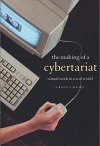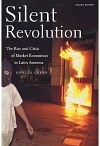Movements
The strikes that have recently brought more than one million teachers and public employees into the streets in South Africa—culminating in a one-day strike on August 25, in which six hundred thousand public workers downed tools nationwide—have been brewing for the past few months | more…
It is worth the trip to Syracuse University just to see Ben Shahn’s sixty-by-twelve-foot outdoor mural, “The Passion of Sacco and Vanzetti.” Unveiled in 1967, the mosaic tile mural tells the story of Nicola Sacco and Bartolomeo Vanzetti, executed in 1927 for a crime which they probably did not commit. Witnesses placed them miles from the crime scene when the murder of a paymaster occurred at a shoe factory in Braintree, Massachusetts | more…

The workplace has been changed in recent decades by the rise of digital technologies. Parts of a single labor process can be moved around the world, with implications not only for individual workplaces or firms, but for the working class as a whole. Computer operators in India process medical transcriptions for doctors in the United States at one-eighth of what U.S. computer operators would earn, and at four times the salary of an Indian schoolteacher. | more…
In his speech from the dock, at his 1962 trial for inciting African workers
to strike and leaving the country without a passport, Nelson Mandela described
the initial formation of his political ideas: | more…

Throughout the 1990s Latin America was seen as the poster child of neoliberalism, as governments opened their economies to imports, slashed social spending, and gave priority to attracting foreign investment. In the process, runaway inflation was held in check and currencies stabilized. But this was done at huge environmental and human cost. Global corporations and small elite in Latin America grew rich, but the bulk of the population suffered. | more…

The economic boom of the 1990s created huge wealth for the bosses, but benefitted workers hardly at all. At the same time, the bosses were able to take the political initiative and even the moral high ground, while workers were often divided against each other. This new book by leading labor analyst Michael D. Yates seeks to explain how this happened, and what can be done about it. | more…
Since Paul Sweezy gently rejected my first submission to Monthly Review in 1972, he and Harry Magdoff and all of the MR writers and staffpersons, living and deceased, have been my mentors, helping me to see things more clearly and to act more effectively. And Harry Braverman’s book ranks near the top of MR’s books which have deeply influenced my thinking. I remember mentioning it in my PhD defense in 1976. I told the committee that one of the weaknesses of my thesis, which was about public school teachers’ unions, was that it had not incorporated the pioneering work of Harry Braverman in Labor and Monopoly Capital. I had a suspicion that the work of teachers was not immune to the forces described so well by Braverman: detailed division of labor, mechanization, Taylorization. Today, as the fine scholar David Noble will tell us, these forces are bearing down upon the professoriate, with potentially devastating results | more…
I was extremely pleased to have the opportunity to read, once again, Braverman’s Labor and Monopoly Capital and to reflect on the last twenty-five years. While the years seem to gallop now, I want to try in this brief time period to capture a few moments and reflections and share them with you | more…
There’s been a lot of discussion in MR about the implications of “globalization.” We don’t intend to repeat the arguments here, but we recently received a communication that brings into focus one major aspect of this much debated issue: what it means for workers to “think globally, act locally.” | more…
The relationship between gender and class, central to understanding the history of the labor movement, raises important issues for Marxist analysis in general. Grappling with the complexities of this relationship forces us to confront a wide range of theoretical and practical questions. What is the connection between “material conditions” and “identity”? What role do culture, discourses, sexuality, and emotions play in shaping people’s responses to their material conditions? How are the varieties of consciousness of class related to other identities and affiliations? These questions challenge us theoretically and politically, as we seek to develop a working-class politics that incorporates struggles against all forms of oppression | more…
Even at the height of Hollywood’s political consciousness, which ended in the notorious Cold War repression of the Hollywood Ten and many others in the industry, American movies usually rendered their politics in code. But there’s nothing coded or coy about Bulworth. Whether you like the movie or not, whether you like its humor or not, its politics is definitely in your face. And, as far as it goes, that politics is much more left than anything we’ve seen in the U.S. for a very long time. | more…
Crisis and Class Struggle in East Asia
What a difference a year makes. As recently as last summer, economic pundits and global investors were singing the praises of the “Asian tigers.” The World Bank basked in the glow of its 1993 report, The Asian Miracle. Throughout ruling circles, the “Asian model” was touted as proof that open markets and the free flow of capital would be the salvation of humankind | more…


